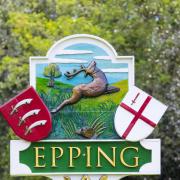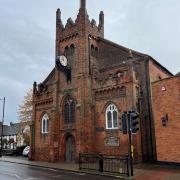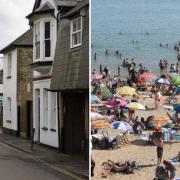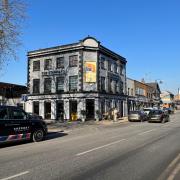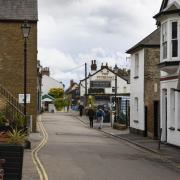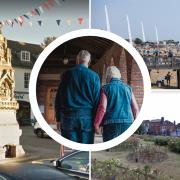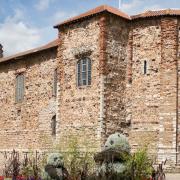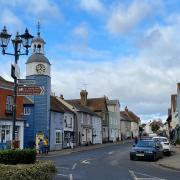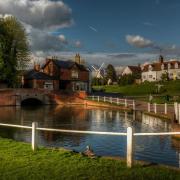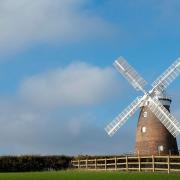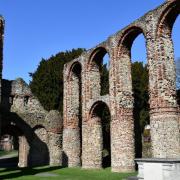Escape the city this winter and take a walk around Ongar, a pretty market town that has retained its traditional character and charm, says Jo Jarvis
On Livingstone’s trail
ONLY a hop, skip and a jump from the capital and yet ideally positioned in a countryside location, Ongar is an ideal staging post for a weekend adventure. That was certainly the case for the famous explorer and adventurer Dr David Livingstone (1813-1873) who lived and preached in the area which consists of the parishes of Chipping Ongar, Shelley, Marden Ash and Greensted.Dr Livingstone lived in a room near the United Reformed Church, on Chipping Ongar’s High Street, in 1838, just before he left for London to complete his medical studies. The building is now called Livingstone Cottages and has a plaque over the central passageway, which records his time spent there. Livingstone stayed in Ongar for 15 months and during this time took long walks in the surrounding countryside. Today his former home remains the ideal point from which to begin a leisurely walk around the area for the many visitors who travel here to enjoy the extensive rolling landscape, nurtured farmland and listed buildings.
Origins of OngarOngar as a settlement dates back to the 11th century when Richard de Lucy, Chief Justice of England, built a motte and bailey castle in the area. During the 12th century the town was known as Castle Ongar, but even though the castle was demolished in the 16th century, the impressive motte remains behind the High Street and is definitely worth a stop on a tour of the village. If you take the path beside the library and follow the signs to the motte you will also have the chance to admire many lovely views of the surrounding countryside, which can be fully explored by joining The Essex Way. The Essex Way is a long distance path stretching right across the county of Essex, but which can be picked up from behind Ongar High Street and is clearly signposted. Within a short distance The Essex Way will bring you to Greensted where the oldest wooden church in the world can be found. This route is certainly one that Dr Livingstone would have walked himself, exploring the church and discovering the Crusader coffin in the churchyard with its original timbers that archaeologists confirm date back to 1066. On leaving Greensted, Dr Livingstone crossed farmland to Stanford Rivers. Records show that he went to Stanford to preach at the independent chapel there on one occasion, but forgot his sermon and had to return to Ongar for it. Before returning to Chipping Ongar you will pass the ridge of oaks at Kettlebury Spring offering more views of open countryside before returning to Ongar High Street. Once back in Ongar, don’t forget to visit two of its most renowned listed buildings. The United Reformed Church should be your first stop. It has stones and plaques inside commemorating its connection to Dr Livingstone and to Jane Taylor (1793-1824) who wrote the world famous nursery rhyme Twinkle Twinkle, Little Star. She is buried in the church with her parents. Another highlight not to miss is St Martin’s Church in Castle Street, considered the oldest surviving building in Chipping Ongar. The Norman church features a tomb called The Boodle Tomb where Edward Boodle is buried. Some believe Edward Boodle founded London’s famous Boodle Gentleman’s Club in 1762 and the tomb has recently been renovated with money obtained from the Boodle Club in Pall Mall, London.You can follow Dr Livingstone’s example even in relaxation by unwinding at the Royal Oak pub on Ongar High Street, an establishment which Dr Livingstone regularly visited to reflect on his day’s events. You’ll certainly find plenty to contemplate in Ongar.
FACTS
The towns and villages in the Ongar area date back to Saxon and Norman times The town takes its prefix from the Saxon words cheape or cheppyng, meaning market Ongar is twinned with the town Cerizay in France The town has had a weekly market since the 12th century. It takes place on the High Street every Wednesday During the coaching era, Ongar was an important staging post for travellers from London to East Anglia and by 1848 there were daily departures from the Kings Head Inn
WATCH THIS SPACE...
The Epping Ongar Railway, which operates on a preserved railway along the final section of the old Great Eastern Railway and London Underground Central Line branch line between Epping and Ongar, is being restyled and is due to open as a major tourist attraction next year.
FIND OUT MORE...
For more information about the route Livingstone took around Ongar visit: Chipping Ongar Library
The PleasanceHigh StreetChipping OngarCM5 9AB01277 362616Visit www.colnevalley.com or www.essex.gov.uk to order your copy of a guide to The Essex WayOngar Town Council01277 365347
Ongar Millenium Historical Society11 Bowes Drive, Ongar CM5 9AU01277 362 684



